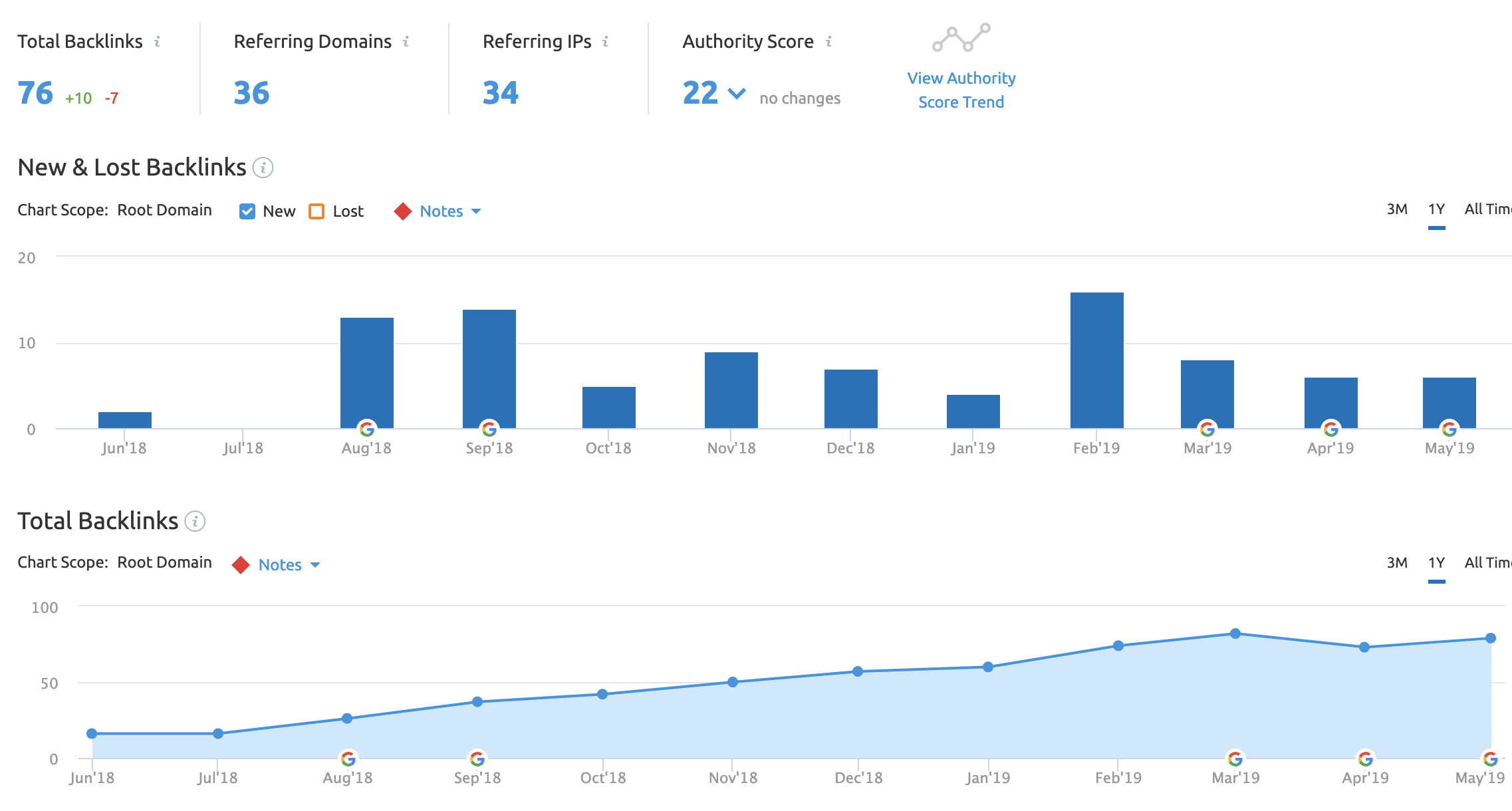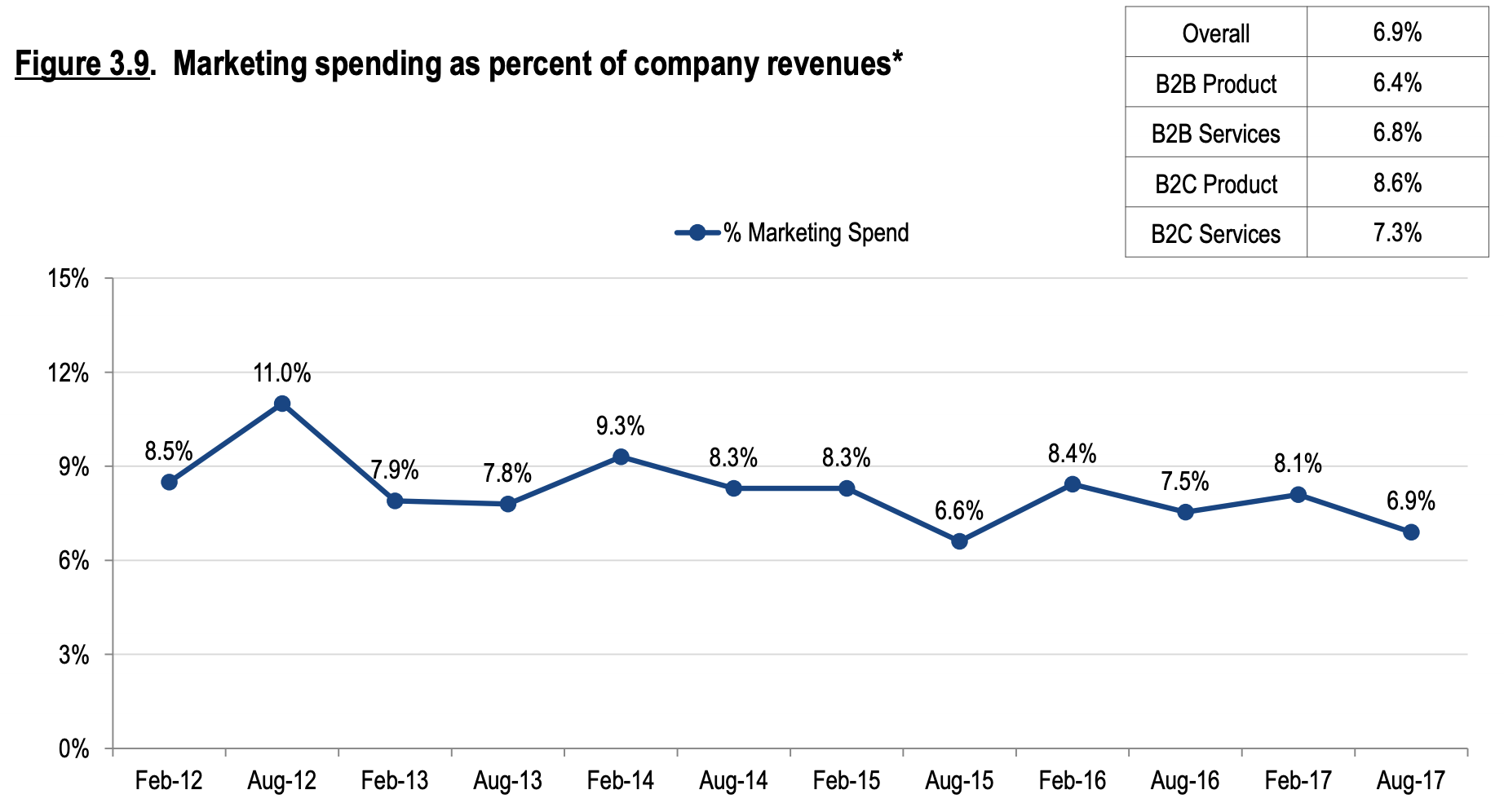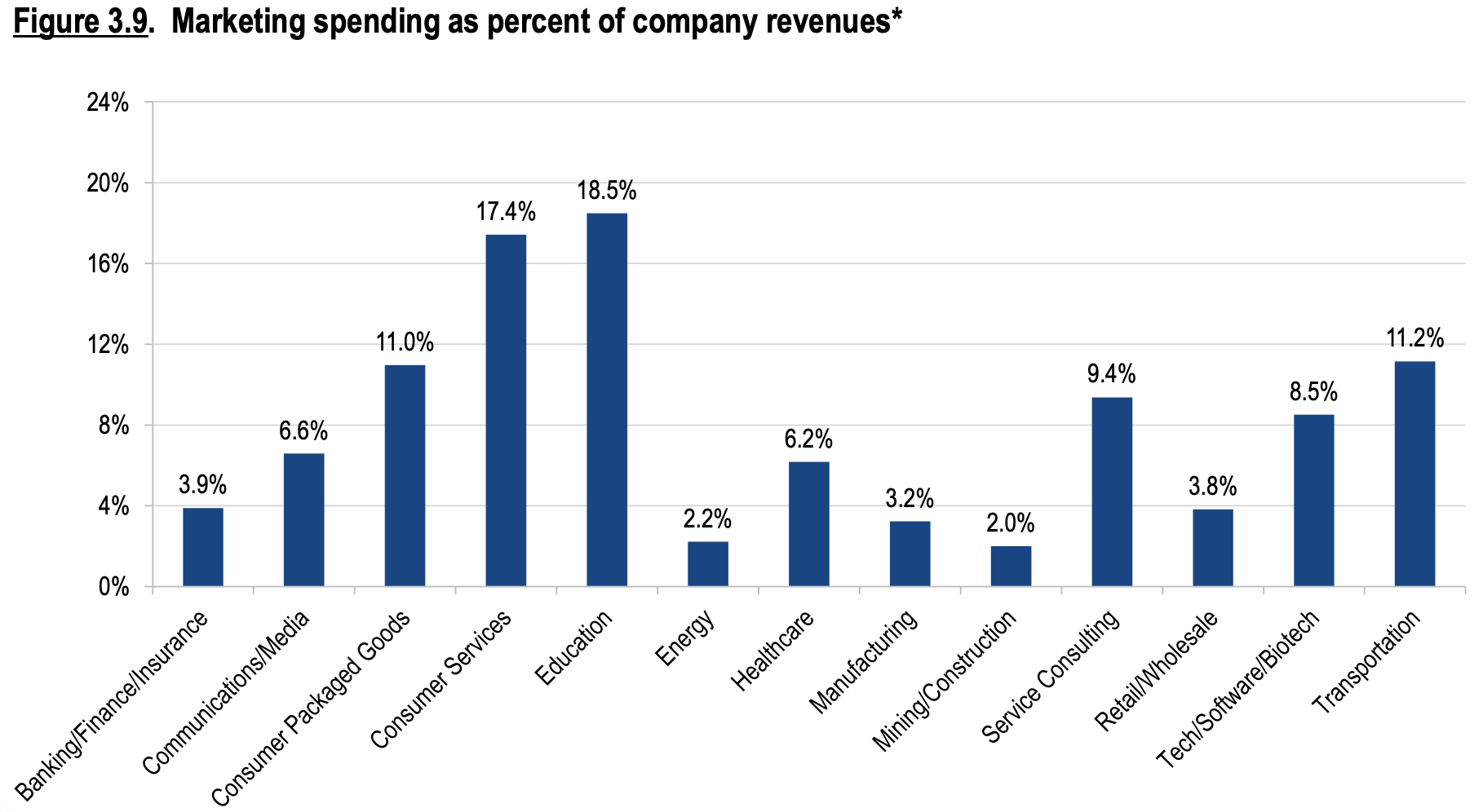Marketing is hard, there is no doubt about that!
Whether your challenge is driving leads, combating poor conversion rates, proving ROI, improving sales or any other myriad of issues marketers face daily you will no doubt agree that marketing is a constant struggle.
In this way, it doesn’t matter if you are a marketer reading this post from a coffee shop in Seattle, your office in London or your co-working space in Cape Town you can probably relate to most other marketers around the world.
Now, I'm not trying to be a downer.
Quite the opposite…
As marketers, there are very few, if any, challenges out there that we face that some other marketers have yet to face and overcome. And because of this, we can learn a lot from each other.
The top two marketing challenges globally, in fact, are the same across North America, Latin America, Australia, New Zealand, Europe, South East Asia, the Middle East, and Africa.

In this post we are going to take a closer look at the top 5 challenges marketers in Africa face today:
- Generating traffic and leads (62%)
- Proving ROI from marketing activities (40%)
- Managing your website (27%)
- Securing enough budget (25%)
- Targeting content for an international audience (20%)
Let’s get stuck in shall we:
1. Generating traffic and leads
Let me start off by saying this…
There is no magic wand you can wave to automatically boost traffic and leads, no matter what Niel Patel tells you.
Great, now that we have cleared that up, let's take a close look at the problem at hand.
Whether you run an e-commerce store, a blog, a new SaaS platform, sell window blinds or do just about anything, website visitors are very important to you.
The reason it is so important is that it’s the starting point for measuring how many leads you are likely to convert and ultimately how many customers you’ll acquire.
Not enough website traffic means not enough leads will filter down to your sales team. This is obviously bad.
Most websites generally convert visitors into leads at a relatively fixed rate. For example, your site might convert visitors from various sources as follows:
- 1000 Organic visitors at 10% = 100 leads
- 5000 Paid visitors at 1% = 50 leads
- 200 Referral visitors at 5% = 10 leads
If your monthly target is 200 leads a month what do you do?
There are 2 ways to solve this problem…
Organic and Paid
If you go the organic route you will need to increase website visitors by 400 to get the 40 leads you are looking for. Organic traffic is a great sustainable option albeit more time-consuming.
There are 2 key elements to increase the organic traffic to your website:
Firstly, create blog content that resonates with your target audiences’ challenges. The more effective you are at addressing their needs and helping them solve their current challenges the more likely you are to not only get them to come read your content but also to see an increasing number of them convert into leads.
Secondly, from a Google perspective, you need to build up backlinks. Backlinks help Google and other search engines determine how authoritative and, importantly, relevant your site is for a specific topic. It is also a trust signal for Google as someone else is saying “hey this website is ok.” The more backlinks you get to the same content or website pages the more likely Google will recognise your content as valuable and will increase your ranking on a SERP (search engine results page).

If you decide to go the paid route you will need to increase your website traffic by another 4000 hits. This isn’t always possible but for the sake of this blog, let's assume you have the budget to nearly double your current paid traffic.
Assuming you can keep your targeting relatively consistent you should be able to scale your paid marketing with relative ease. The downside to this strategy, however, is that the moment you stop spending on paid all your leads will dry up.
That’s why we recommend a hybrid of sorts. We often separate marketing into builder and driver activities. Content and inbound marketing is a builder (long term results). As you create more content and grow your reach you build organic traffic and backlinks. You content never stops working for you and each blog will continue to build and grow as long as your website is live.
Paid is obviously a driver (short term results). It gets results immediately but does not grow or build over time unless you throw more budget at it. A hybrid mix of these two in either a 50/50 split or however works for you and your budget is a great way to make sure your marketing is driving the results you need right now while building for the results you need tomorrow.
2. Proving ROI from marketing activities
Do you remember in high school when you were taught the Pythagoras theorem?
a² + b²= c²
Just kidding...
Return on investment is extremely important for all marketing teams and not that difficult to measure.
Most marketing teams don’t effectively measure the ROI of their marketing campaigns. This is mostly due to poor analytics integrations, inconsistent campaign tracking and lack of clear KPI’s.
Data is king and the sooner you get your data in order the sooner you’ll be able to prove that the campaigns your team delivered created value and if they didn’t, why.
We’re not about to dive into how exactly to break down your ROI calculation, that’s for a future blog, instead, I'm going to lay out 3 simple steps you can take to get your data right and start measuring your return on investment.
1. Data collection
Firstly, you can’t improve what you don’t measure or in this case prove what you don’t measure. You need to make sure that you have the right analytics implemented to track and collect your users' data.
This does not only mean implementing Google Analytics, although this is crucial, specifically if running booking or e-commerce on your site, or capturing some basic lead data like name, email, company etc.
Most marketing automation systems like HubSpot or Marketo collect a wealth of user data, with cookies, which is crucial in shedding some light on lead behaviour.
2. Consistent tracking
Next, look at how you are tracking your campaigns:
- Do you have standardised parameters and field values?
- Do you use tracking codes consistently?
- And how granular are you going with those tracking codes?
- Do you know where your leads are coming from?
This seems simple enough but it can be tedious to try and track every campaign element so most marketers might create one for their email campaign and another for their PPC campaign. And sales might not be tracking anything at all.
At the very least both sales and marketing should use the utm_medium=[insert medium] and utm_source=[insert source name] consistently. This will ensure that you are capturing the right data accurately.
Note: Many data points that are disorganised and confusing are almost as bad as no data at all.
3. CRM integration
Finally, integrate marketing and sales activity.
Now we all know that marketing and sales have not been the best of friends and often blame each other for targets missed and poor conversion rates. By integrating the systems each team uses under a central CRM you accomplish a few key things:
- You enhance data sharing and create transparency on both sides of the table. By utilising one automation and CRM system you are able to give both teams access to the same data.
- By using the same data fields sales can more clearly define what they consider sales qualified leads which marketing can use to segment leads and which ones to send to sales.
- Sales can also now access the data marketing collected on specific leads and then use this as the context for their communication and engagements going forward.
The more closely aligned sales and marketing are, the more accurately you will be able to track the flow of users as they move from visitor to lead to customer and then tie it back to the exact campaign, medium and source.
3. Managing your website
Don’t run away just yet…
I know that managing a website can be very time consuming, often expensive, and frequently the cause of internal disputes.
But it doesn’t have to be that way.
No matter if you are running a blog, e-commerce store or a marketing site for your new app, your website is a critical tool that needs to be sharpened and improved to get you better results.
Gone are the days of build it and forget about it, for 2 years, then burn it all to the ground and build it again.
No, small amounts of consistent effort will help you optimise your site, and turn it into a lead generating machine!
The simple solution is known as growth-driven design.
Here’s a quick definition:
Growth-driven design is an approach to website design and maintenance that succeeds in minimising the risks of traditional web design through a systematic approach that shortens the time to launch by focusing on real impact, and continuous learning and improvement.
Simply put, instead of going all guns blazing, you take a more measure scientific approach to your website design. This will allow you to make small iterations based on data and hypotheses to determine what to change and why to change it.
Additionally, we also measure a few key metrics on a monthly basis:
- Site Performance (Index speed, Time to Interactive)
- Search engine optimisation (On-page optimisation, mobile experience)

These might seem a little technical but the Google Lighthouse tool is simple to use and very effective. It also gives you explanations of all the report items to make it easy to understand. It will help you prioritise some of the website optimisations you need to make and also act as a benchmark for you to see if the changes you have implemented are working.
4. Securing enough budget
Ah, budget…
Yes, we always want more but there never seems to be enough.
So how do you secure enough budget to make sure you can deliver the results/growth that your business needs?
There is no definitive answer for this and it depends ultimately on many factors. The best way that I have seen is by considering these 3 things:
1. What is your current cost-per-acquisition (CPA) and life-time-value (LTV)?
User acquisition costs are a great way to determine what you need to spend to acquire the new customers you are looking for.
Here’s the math:

Cost per acquisition has been rising in popularity to determine the cost of closing a new customer or driving a new lead. You can also use it to determine which channel (Facebook, Instagram, etc) or source (paid, organic, referral, etc) is your most cost-effective. Armed with this and the average amount the customer will spend with you will be able to determine what you need to spend to meet your turnover target.
Here’s a quick example:
Say you sell red hats. The sales price of a red hat is R 100 and the average customer buys 5 hats from you, once-off.
Last year you spent R 20 000 on your marketing and generated 200 customers. Your target this year is R 200 000 in sales.
How much do you need to spend to hit your goal?
- R 100 (sales price) 5 (avg purchase per customer) = R 500 (LTV)
- R 20 000 (marketing spend) 200 (# of customer) = R 100 (CPA)
Now we can work out what you need to spend:
- R 200 000 (target) R 500 (LTV) = 400 (New customers needed)
- 400 (New customers needed) R 100 (CPA) = R 40 000 (New budget required)
3. What are your SMART goals?
SMART (Smart, Measurable, Attainable, Realistic, Timely) goals are a good way to determine what you are trying to achieve. As with the example above, only by understanding your new turnover goal will you be able to determine how much you should spend.
SMART goals are also an important part of aligning marketing and sales to work towards the same target. Without properly established goals you won’t know what to prioritise and will ultimately waste your time and your budget.
Want help setting SMART goals? Take a look at our marketing strategy workbook. It's a complete template to help define your goals and set your marketing strategy.
4. What is your current annual turnover?
Finally, I like to use turnover as an indicator of how cautious or aggressive we are being with our strategy. This will be heavily influenced by the type of business you are in, and the current lifecycle stage (start-up, growth, mature, declining) you are in.
The CMO Survey, an extensive report from 2017, sheds a little more light on this. In the graph below the marketing spend averages out at about 6.9% of the company’s revenue.

The graph below shows the marketing spend as a percentage of revenue per industry. As you can see education and consumer services are leading the way with nearly 20% while energy and mining are much lower at about 2%.

As a guideline, we like to use 5% of the company turnover as a benchmark. Less than 5% is conservative, while 7%-10% is certainly more growth orientated.
5. Targeting content for an international audience
Targeting an international audience is something that is high on the priority list for most businesses in Africa. It could be a neighbouring country or as far as the US, or China.
Whether you are in travel and tourism, manufacturing, professional services, SaaS or any other industry there is certainly a big appeal to drawing in foreign customers.
The key to having your content marketing resonate with those prospective customers is to keep them in mind while you create it.
Here are a few tips:
1. Consider creating culturally relevant content - This could be anything from talking about local pop culture or holidays to writing about local news and events. Thanksgiving, Chinese New Year, Brexit and GDPR are all game.
Note: It is important to still keep your content aligned to your buyer persona’s needs and contextually relevant to your industry.
2. Check your units - In the US they use stone, in the UK pounds and in South Africa we use kilograms. Most countries use the Metric system while in the US they still use the Imperial system.
To make your content globally relevant just give it a tweak by incorporating the alternative unit of measurement where relevant.
3. Translate liberally - French, Portuguese, Spanish, Chinese are spoken all over the world and it is important to make sure that if you are targeting customers who speak a different language that you make your content as easy to understand as possible.
Have your content translated into one or more language if that makes sense for your company. This can be your entire site or as simple as a dynamic CTA (call-to-action) that is more effective in their 1st language than their 2nd or 3rd.
Whether it is driving traffic and generating leads, or proving ROI, businesses and marketers need to take proactive steps to solving some of their core challenges.
Africa is certainly behind the US and Europe when it comes to this adoption but we are catching up.
As businesses in Africa continue to grow it is important for marketing teams to utilise the technology available to help solve some of these challenges as well as drive internal skills development to help properly implement and manage these new technologies.
Are you ready for the only content marketing template you'll ever need? Hit the download button below to get started 👇🏼




